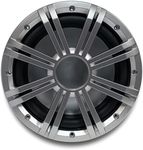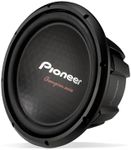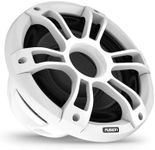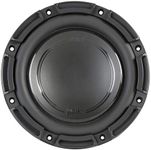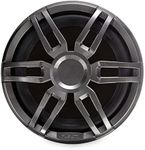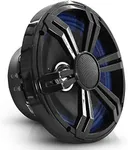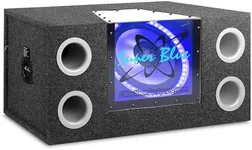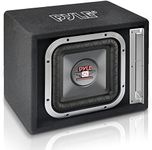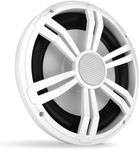Buying Guide for the Best Marine Subwoofers
Choosing the right marine subwoofer can significantly enhance your boating experience by providing deep, rich bass that complements your music. When selecting a marine subwoofer, it's important to consider several key specifications to ensure you get the best performance and durability for your needs. Here are the main specs to focus on and how to navigate them.Power Handling (RMS and Peak)Power handling indicates how much power a subwoofer can handle without being damaged. RMS (Root Mean Square) is the continuous power a subwoofer can handle, while Peak power is the maximum power it can handle in short bursts. Higher RMS values mean the subwoofer can handle more continuous power, which is important for consistent performance. For casual listeners, a subwoofer with lower RMS (100-300 watts) might be sufficient, while enthusiasts or those looking for louder, more powerful bass should consider higher RMS values (300-600 watts or more).
SensitivitySensitivity measures how efficiently a subwoofer converts power into sound, usually expressed in decibels (dB). Higher sensitivity means the subwoofer can produce more sound with less power. If you have a lower-powered amplifier, look for a subwoofer with higher sensitivity (above 90 dB). For high-powered systems, sensitivity is less critical, but higher values can still improve overall efficiency.
Frequency ResponseFrequency response indicates the range of frequencies a subwoofer can reproduce, measured in Hertz (Hz). A wider frequency range means the subwoofer can produce deeper bass and higher notes. For marine subwoofers, a typical range might be 20-200 Hz. If you prefer deep, thumping bass, look for a subwoofer with a lower minimum frequency (around 20-30 Hz). For general use, a standard range should suffice.
ImpedanceImpedance, measured in ohms, affects how much power the subwoofer draws from the amplifier. Common values are 2, 4, and 8 ohms. Lower impedance subwoofers (2 ohms) draw more power and can produce louder sound, but they require a compatible amplifier. Higher impedance subwoofers (8 ohms) are easier on the amplifier but may not be as loud. Match the subwoofer impedance with your amplifier's capabilities for optimal performance.
SizeSubwoofer size, typically measured in inches, affects the depth and power of the bass. Common sizes for marine subwoofers are 8, 10, and 12 inches. Larger subwoofers (10-12 inches) can produce deeper and more powerful bass, but they require more space and power. Smaller subwoofers (8 inches) are more compact and easier to install but may not deliver as much bass. Choose a size that fits your available space and desired bass output.
Enclosure TypeThe enclosure type affects the sound quality and installation options. Sealed enclosures provide tight, accurate bass and are more compact, making them suitable for smaller spaces. Ported enclosures offer louder, booming bass but are larger and require more space. Consider your available space and desired sound quality when choosing an enclosure type.
Marine RatingMarine subwoofers must withstand harsh marine environments, including exposure to water, salt, and UV rays. Look for subwoofers with a marine rating or certification, indicating they are designed to resist these elements. This ensures durability and longevity in marine conditions. Always choose a subwoofer specifically rated for marine use to avoid damage and ensure reliable performance.
